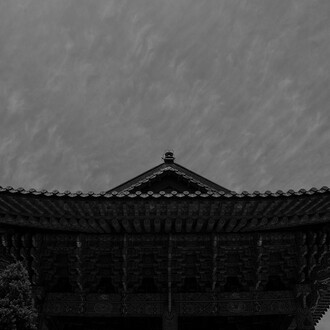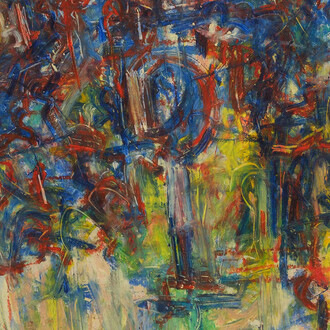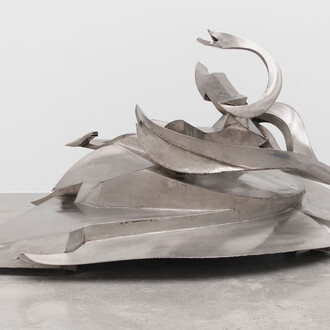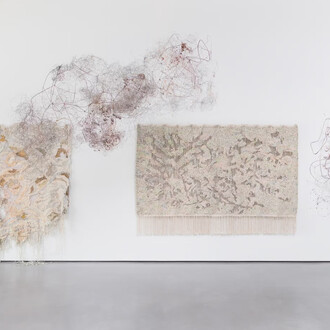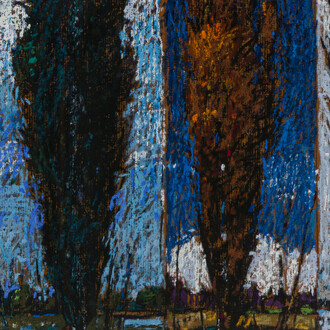Matthew Brown is pleased to present Particular dish, an exhibition of new paintings and drawings by Los Angeles-based artist Justin John Greene. In this body of work, Greene transforms the restaurant table into a stage for labor and tension—using caricature and cultural reference to probe the social and psychological dynamics beneath scenes of shared indulgence.
Each painting in Particular dish is grounded by a table that anchors the lower portion of the composition. On each spread, the remnants of a meal accumulate into a painterly debris field of lipsticked glasses, smudged plates, and half-eaten food. These cluttered surfaces recall Daniel Spoerri’s Snare pictures, freezing the moment just after consumption. Like Spoerri, Greene is less concerned with the feast than with what’s left behind: the residue, the evidence, the psychic weight of a meal already over but not yet cleared.
Above the table line, diners are rendered in a cacophony of styles, shifting from observed portraiture to expressionistic caricature. Familiar faces appear at the table: old Hollywood stars, art world regulars, the artist himself, and members of his personal orbit. Their bodies twist and collide into one another in manic, euphoric configurations. Waitstaff weave through the compositions like unstable satellites, their features stretched and distorted into futurist machines. These distortions suggest not only the dehumanizing rhythms of service labor but also an unraveling beneath the surface choreography of hospitality.
The format evokes the tradition of the 20th-century restaurant mural, particularly the celebrity caricatures of Al Hirschfeld at Hollywood’s historic Frolic Room and Edward Sorel at the Monkey Bar in Manhattan—works that flattened nightlife into a social mythology. Greene references this lineage, pushing the format into portraits of pressure, excess, and emotional fray, charged with both manic celebration and psychological observation. His approach draws on the tradition of artists using restaurants, bars, and taverns as condensed stages for social commentary, settings where the dynamics of society are played out through the rituals of dining, drinking, and display. Through his varied approach to portraiture, exaggeration becomes both a visual strategy and a subject in its own right. What emerges is a layered image of the gallery dinner, imagined as a concentrated site of art-world and capitalist logic, where appetite, attention, transaction, and exhaustion collide.
Across Particular dish, Greene leans into the instability of the scene. Styles shift mid-composition, producing a manic elasticity that reflects his ongoing exploration of figuration and distortion, structure and collapse. The paintings oscillate between indulgence and service while foregrounding the artist’s labor—the decisions, revisions, and psychic weight embedded in the act of making. Rather than offering a tidy critique of capitalism, Greene examines the systems of hunger that shape us: for intimacy, value, meaning, and attention. Ultimately, Particular dish is not just a portrait of that system, but of the conditions that allow it to endure. The lingering question: what does it mean to show up hungry?










